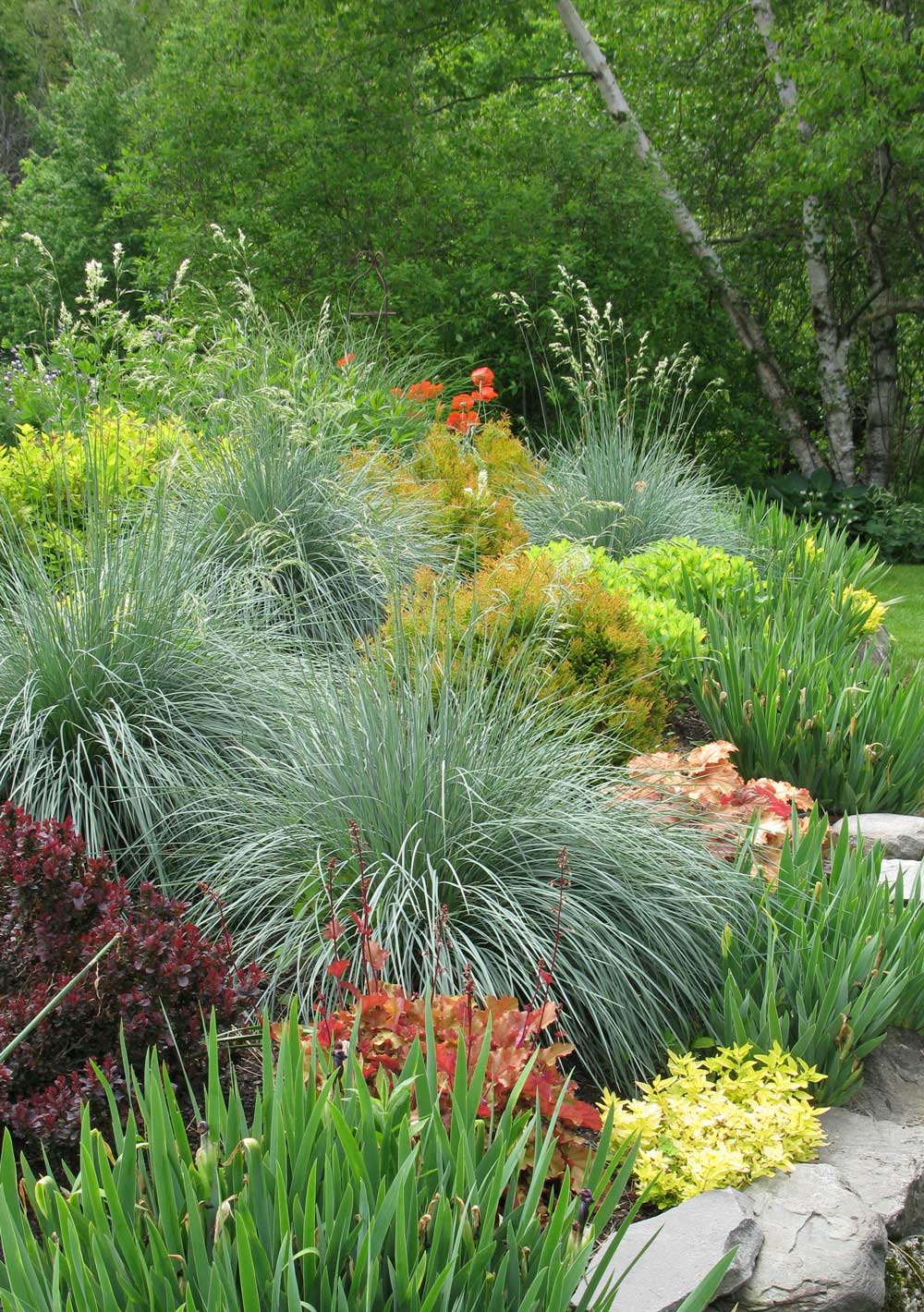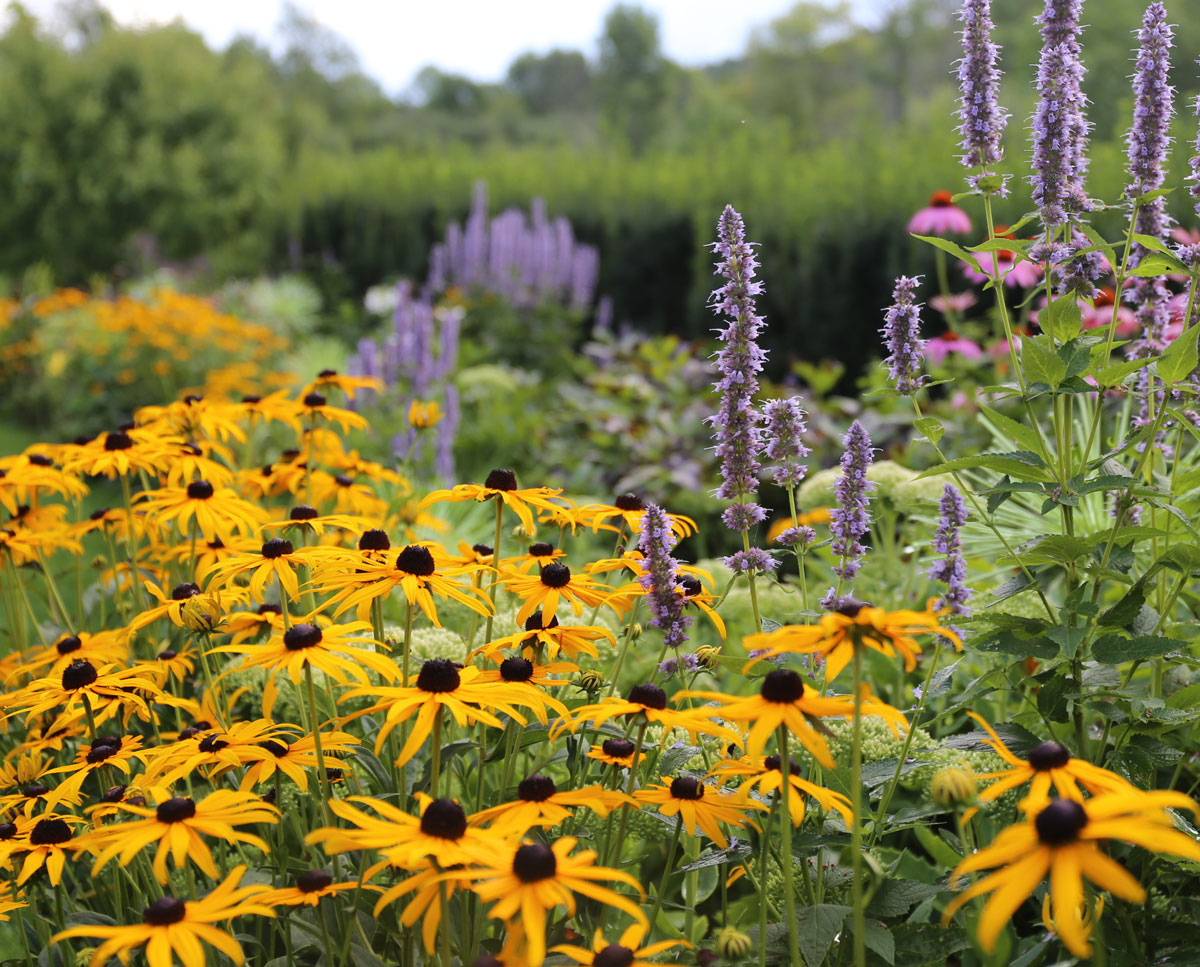How to Grow a Flower Garden With Less Water
Watering your flower garden can be relaxing, but it can also become a time-consuming chore. And in many areas, outdoor watering is being restricted in ways that make it difficult to water, even if it’s an activity you enjoy. Read on for some practical ways to minimize water usage, followed by a list of plants that perform well without a lot of water.

Identify Microclimates
Every yard has some areas that are wetter or drier than others. Become aware of these natural microclimates and then lean into them. When plants are matched with their preferred growing conditions, there’s less need to worry about supplemental watering. Iris and sedum, for example, thrive in full sun and dry, sandy soil. Primroses, hostas and most ferns must have shade and consistent moisture.
Improve the Soil
Incorporating compost or shredded leaves into the soil is an investment that really pays off when the weather is dry. Organic matter enriches the soil with important plant nutrients and encourages beneficial soil life. Just as importantly, it acts like a sponge to absorb moisture and release it as needed. Plants can be much more self-sufficient when your soil contains at least 5% organic matter.
Make Shade Your Friend
Flower gardeners often complain about having too much shade. But shade has big benefits when the weather is dry. It lowers the soil temperature, reduces surface evaporation, and extends bloom time. When adding trees and shrubs to your home landscape, choose plants that are typical for your area, preferably natives that will thrive without irrigation.

Keep the Soil Covered
Moisture evaporates quickly when bare soil is exposed to sun and wind. Keeping it covered minimizes this moisture loss. Mulch around the base of your plants with an organic mulch such as shredded leaves or compost. You can get away with not mulching if you plant densely enough for the plants to shade the soil surface with their foliage.
Invest in Irrigation
Overhead sprinkling is inefficient. As much as half the water can be lost to evaporation before it reaches plant roots. Soaker hoses and drip irrigation systems direct water to the root zone where it’s needed. Using timers ensures your plants don’t go thirsty but watch the weather and skip cycles when it rains. As a rule, it’s better to water deeply and less often.
Time Your Watering Efforts
Water your flower garden in the early morning so the foliage is completely dry by evening. This helps inhibit fungal diseases like powdery mildew. Containers, on the other hand, should be watered in the late afternoon or evening. This gives them plenty of time to refresh themselves before facing another day.

Choose Containers Wisely
Container plantings usually require daily watering. To minimize moisture loss, plant in non-porous containers that are made of plastic or a glazed ceramic material. Grouping containers together shields them from sun and wind and is another effective way to reduce moisture loss. It also makes watering chores more efficient.
Banish Weeds
A well weeded flower garden looks neater and is more inviting. Removing weeds also saves water by reducing competition. Pull weeds when they are young – before they have time to produce seeds. And don’t slack off in the second half of the growing season. Weeds are wily and many of them produce seeds in late summer and fall after gardeners have let down their guard.

Drought Tolerant Annuals, Perennials and Bulbs
Growing conditions can vary dramatically from one region to another. Please use the following lists as a general reference and adjust as needed for your location.
Drought Tolerant Annuals
Amaranth, Calendula, California poppy, Celosia, Cleome, Cosmos, Gazania, Gomphrena (globe amaranth), Marigold, Melampodium, Portulaca, Salvia, Sanvitalia (creeping zinnia), Sunflowers, Tithonia (Mexican sunflower), Verbena bonariensis, Zinnias
Drought Tolerant Bulbs
Alliums, Crocus, Dutch Iris, Iris reticulata, Tulips
Drought Tolerant Perennials
Achillea (yarrow), Agastache, Artemesia, Asclepias tuberosa (butterfly weed), Baptisia, Butterfly weed, Coreopsis verticillata (threadleaf coreopsis), Echinacea (coneflower), Echinops (globe thistle), Evening primrose, Fall asters, Gaillardia, Goldenrod, Helenium, Hemerocallis (daylily), Iris, Lantana, Lavender, Liatris (blazing star), Nepeta, Oriental poppy, Ornamental grasses, Perovskia (Russian Sage), Rudbeckia, Salvia, Sedum, Solidago (goldenrod), Stachys (lamb’s ears)
